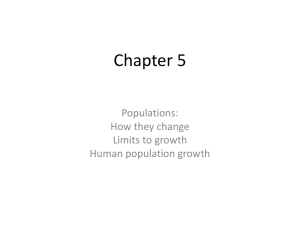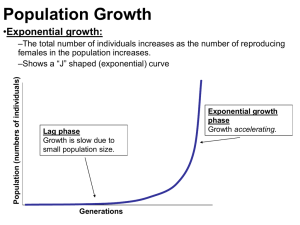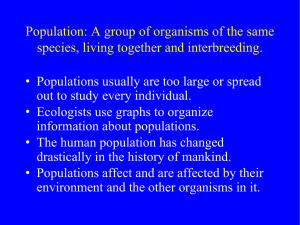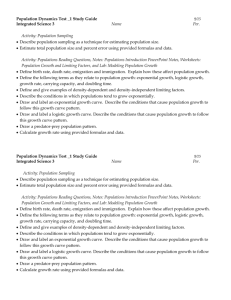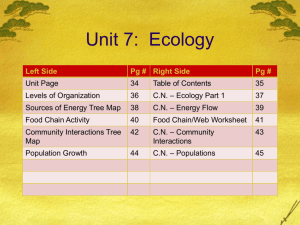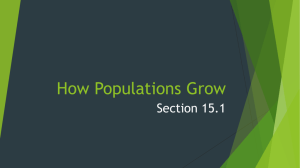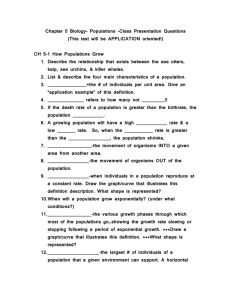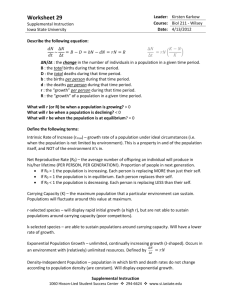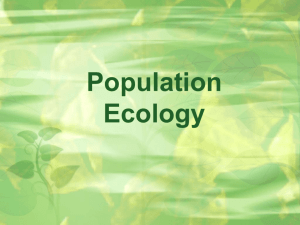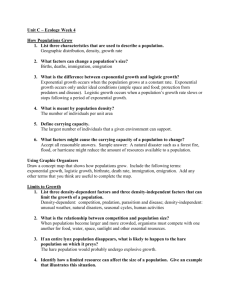Populations
advertisement
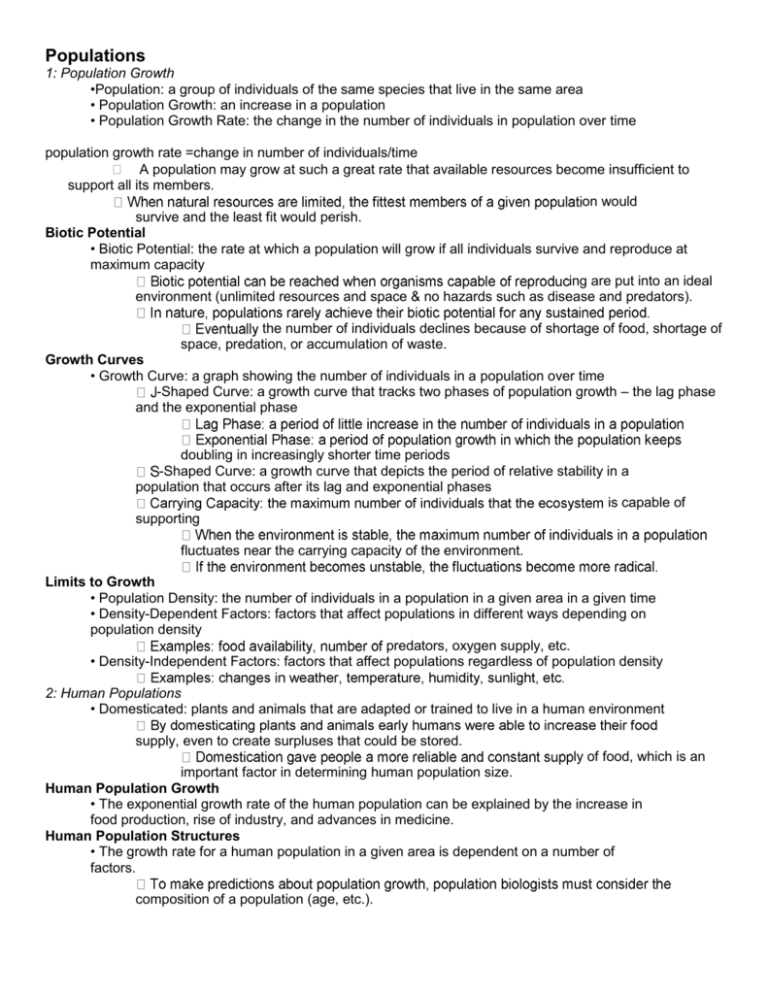
Populations 1: Population Growth •Population: a group of individuals of the same species that live in the same area • Population Growth: an increase in a population • Population Growth Rate: the change in the number of individuals in population over time population growth rate =change in number of individuals/time A population may grow at such a great rate that available resources become insufficient to support all its members. on would survive and the least fit would perish. Biotic Potential • Biotic Potential: the rate at which a population will grow if all individuals survive and reproduce at maximum capacity ing are put into an ideal environment (unlimited resources and space & no hazards such as disease and predators). the number of individuals declines because of shortage of food, shortage of space, predation, or accumulation of waste. Growth Curves • Growth Curve: a graph showing the number of individuals in a population over time -Shaped Curve: a growth curve that tracks two phases of population growth – the lag phase and the exponential phase doubling in increasingly shorter time periods -Shaped Curve: a growth curve that depicts the period of relative stability in a population that occurs after its lag and exponential phases is capable of supporting fluctuates near the carrying capacity of the environment. Limits to Growth • Population Density: the number of individuals in a population in a given area in a given time • Density-Dependent Factors: factors that affect populations in different ways depending on population density predators, oxygen supply, etc. • Density-Independent Factors: factors that affect populations regardless of population density 2: Human Populations • Domesticated: plants and animals that are adapted or trained to live in a human environment supply, even to create surpluses that could be stored. ly of food, which is an important factor in determining human population size. Human Population Growth • The exponential growth rate of the human population can be explained by the increase in food production, rise of industry, and advances in medicine. Human Population Structures • The growth rate for a human population in a given area is dependent on a number of factors. composition of a population (age, etc.).
